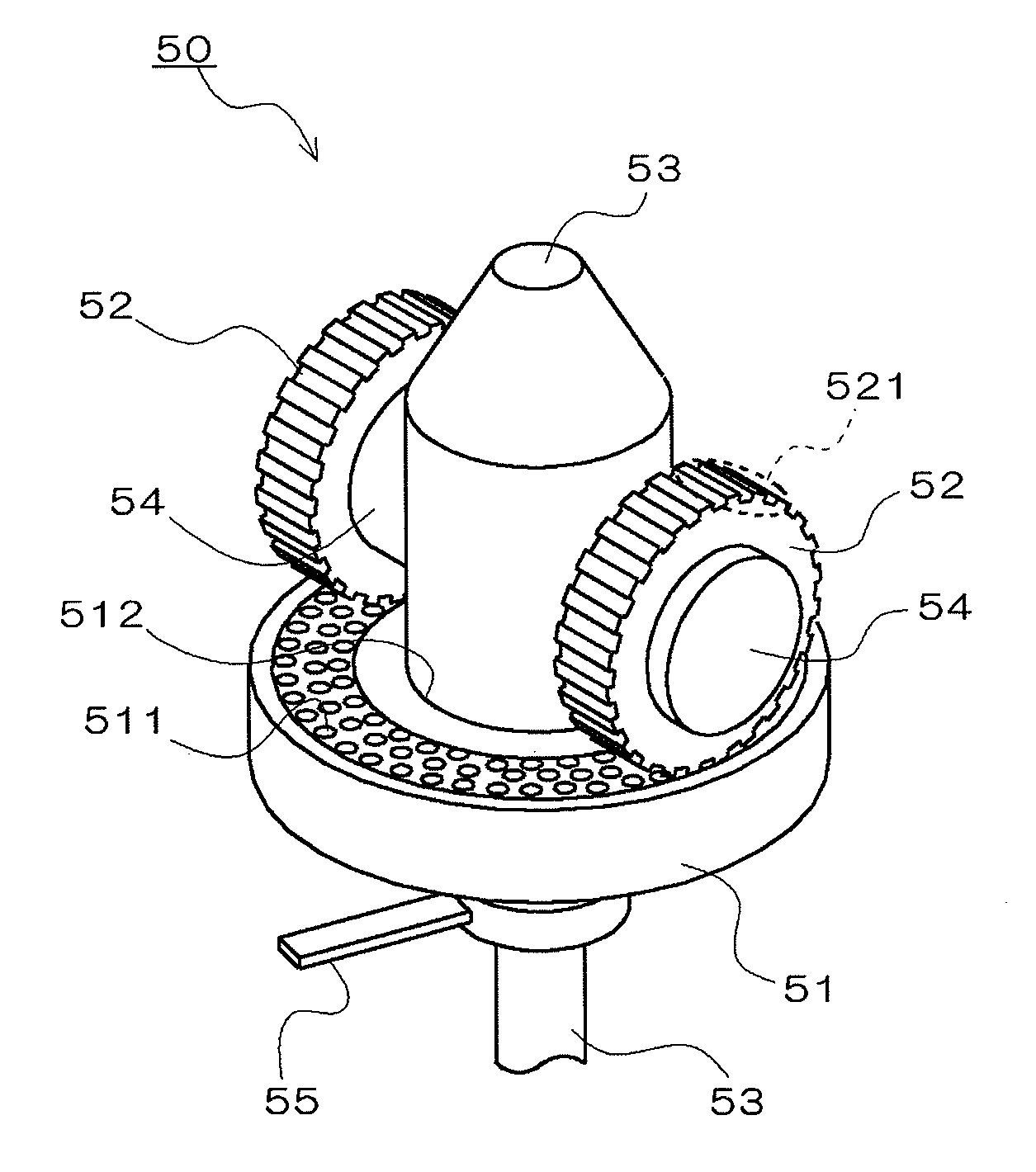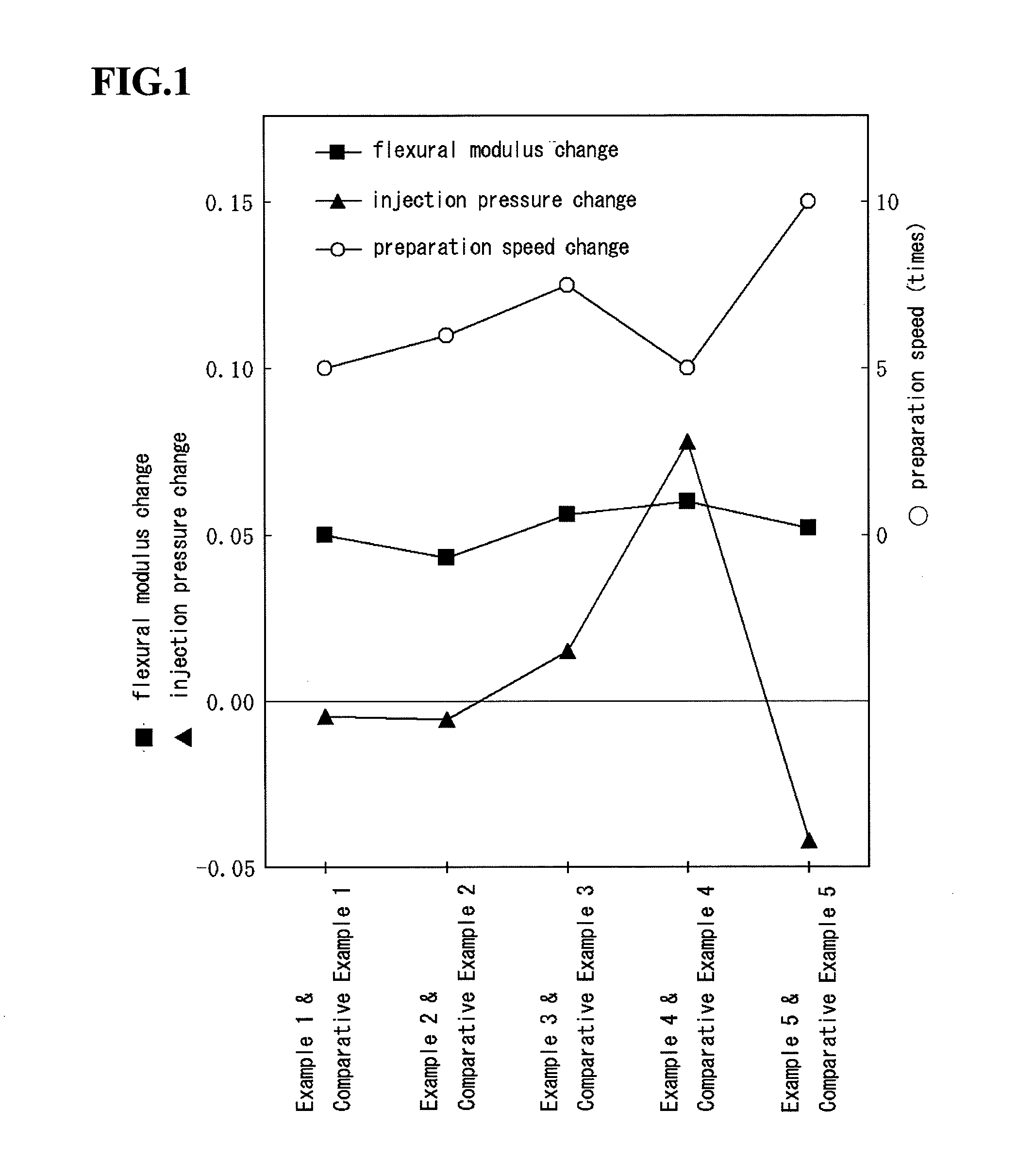Process for producing thermoplastic resin composition and process for producing molded thermoplastic resin
- Summary
- Abstract
- Description
- Claims
- Application Information
AI Technical Summary
Benefits of technology
Problems solved by technology
Method used
Image
Examples
example
[0079]Hereinafter, the present invention is explained in detail using Examples.
[1] Production of Thermoplastic Resin Composition for Examples 1 to 5
[0080]A vegetable material which was kenaf core having a grain diameter of 1 mm or less (for Examples 1 to 3 and Example 5) or a kenaf fiber having a fiber length of 3 mm (for Example 4) and pellets of polypropylene (for Examples 1 to 4) or a polylactic acid resin (for Example 5) shown in Table 1 were charged into a material supplying chamber (denoted by 13 in FIG. 4) of a mixer 1 (it is disclosed in WO2004-076044 and is manufactured by M&F Technology) at weight ratios shown in Table 1 (a total amount of the vegetable material and the thermoplastic resin was 700 g at the amount ratios shown in Table 1) and then kneaded by stirring in a mixing chamber (capacity: 5 L; denoted by 3 in FIG. 4). Mixing blades (denoted by 10 in FIG. 2; denoted by 10a to 10f in FIG. 5) were rotated at a rotation speed of 2,000 rpm for the mixing. After a load (...
PUM
| Property | Measurement | Unit |
|---|---|---|
| Fraction | aaaaa | aaaaa |
| Percent by mass | aaaaa | aaaaa |
| Percent by mass | aaaaa | aaaaa |
Abstract
Description
Claims
Application Information
 Login to View More
Login to View More - R&D
- Intellectual Property
- Life Sciences
- Materials
- Tech Scout
- Unparalleled Data Quality
- Higher Quality Content
- 60% Fewer Hallucinations
Browse by: Latest US Patents, China's latest patents, Technical Efficacy Thesaurus, Application Domain, Technology Topic, Popular Technical Reports.
© 2025 PatSnap. All rights reserved.Legal|Privacy policy|Modern Slavery Act Transparency Statement|Sitemap|About US| Contact US: help@patsnap.com



